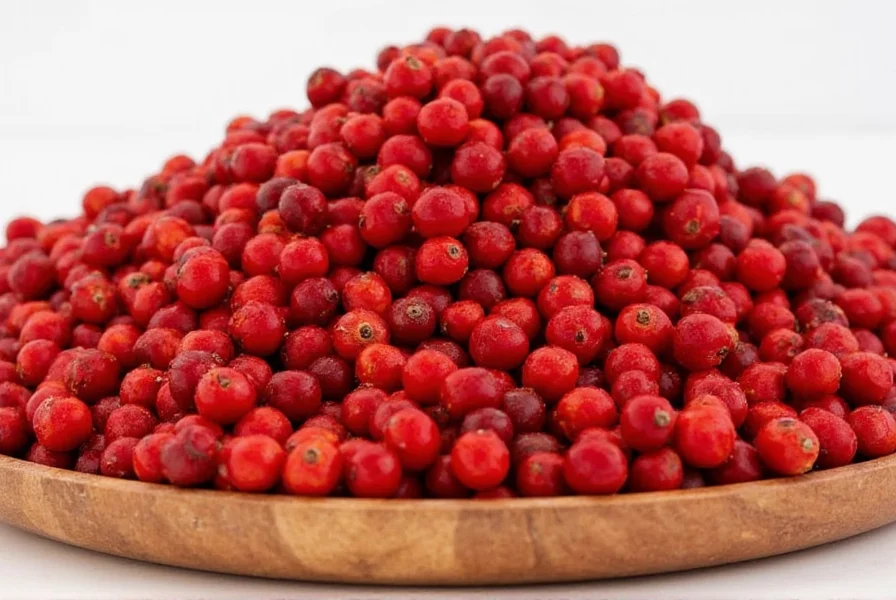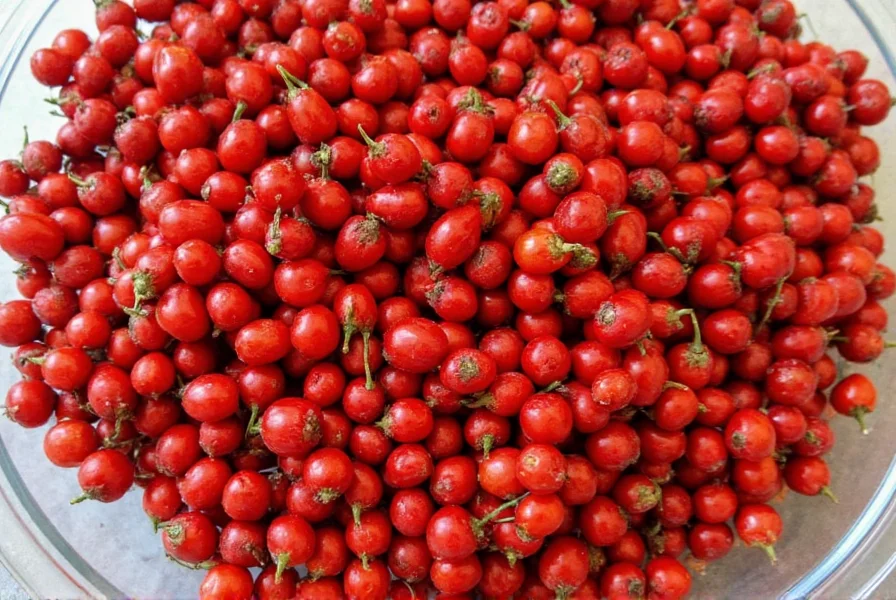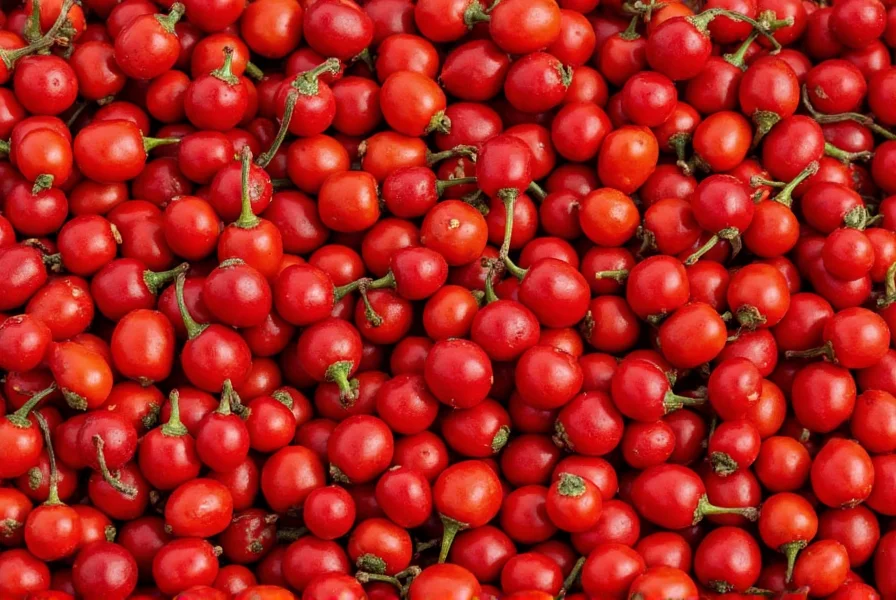Often misunderstood due to their name, pimento berries (allspice) offer a complex flavor profile that has made them indispensable in Caribbean, Middle Eastern, and global cuisines for centuries. These small, dark brown berries contain essential oils that deliver warm, sweet, and slightly peppery notes—making them versatile for both sweet and savory applications.
Understanding Pimento Berries: More Than Just Allspice
The term "pimento" comes from the Spanish word for pepper, reflecting early European explorers' confusion when they encountered this Jamaican native. Botanically classified as Pimenta dioica, these berries grow on evergreen trees that thrive in tropical climates. When harvested unripe, they're sun-dried until they turn dark brown and develop their characteristic aroma.
One common point of confusion involves the difference between pimento berries and pimientos. While pimento berries refer to allspice, pimientos are actually mild red bell peppers often stuffed in olives. This naming overlap frequently causes recipe misunderstandings, particularly for those searching for what are pimento berries used for in cooking.

Culinary Applications of Pimento Berries
Chefs prize whole pimento berries for their longevity and intense flavor compared to pre-ground allspice. When using them in cooking, the berries release their complex flavor gradually, making them ideal for slow-cooked dishes. Understanding how to use whole pimento berries in cooking properly can transform your culinary creations.
| Cuisine Type | Traditional Uses | Recommended Form |
|---|---|---|
| Caribbean | Jerk seasoning, pickling, stews | Whole berries for slow infusion |
| Middle Eastern | Seven spice blends, meat rubs | Freshly ground for maximum aroma |
| European | Pickling spice, mulled wines | Whole in spice bags for easy removal |
| American Baking | Pumpkin pie, spice cakes | Fine ground for even distribution |
Nutritional Profile and Potential Health Benefits
Research into pimento berries health benefits reveals promising compounds, though more studies are needed. These berries contain eugenol (also found in cloves), which has demonstrated antioxidant properties in laboratory settings. Traditional medicine has used pimento berries for digestive support, though scientific evidence remains limited.
Per tablespoon (6g) of ground allspice:
- Calories: 19
- Dietary Fiber: 2.8g (10% of daily value)
- Manganese: 0.3mg (15% of daily value)
- Vitamin K: 4.7mcg (6% of daily value)
Shopping and Storage Guidelines
When selecting pimento berries, look for plump, dark brown berries with a strong aroma. The best quality berries will feel heavy for their size and have a uniform color. For those wondering where to buy authentic pimento berries, specialty spice shops or reputable online retailers typically offer fresher product than standard grocery stores.
Proper storage significantly extends shelf life. Keep whole berries in an airtight container away from light and heat. They'll maintain peak flavor for 2-3 years, while ground allspice loses potency within 6-12 months. For maximum flavor impact, grind berries just before use with a dedicated spice grinder or mortar and pestle.

Common Substitutions and Mistakes to Avoid
If you're searching for substitute for pimento berries in recipes, a blend of equal parts cinnamon, nutmeg, and cloves can approximate the flavor, though it won't replicate the unique complexity. Avoid using pre-mixed pumpkin pie spice as a substitute, as it contains additional ingredients that alter the flavor profile.
One frequent error involves confusing Jamaican allspice with "pimento" in Spanish-speaking regions, which refers to bell peppers. This misunderstanding leads to recipe failures when cooks substitute bell peppers for the spice. Remember that authentic pimento berries always refer to the allspice berry, not any type of pepper.
Frequently Asked Questions
Are pimento berries the same as allspice?
Yes, pimento berries and allspice refer to the exact same spice. The name "allspice" was given by English explorers who thought the flavor resembled a combination of cinnamon, cloves, and nutmeg. The botanical name is Pimenta dioica, and the berries are dried to create the spice we call allspice.
Can I eat pimento berries raw?
While not toxic, raw pimento berries are extremely hard and pungent when fresh. They're always dried before consumption, which mellows their flavor and makes them suitable for culinary use. Eating them raw would be unpleasant due to their intense heat and woody texture.
What's the difference between pimento and pimiento?
This is a common point of confusion. Pimento (with one 'e') refers to the allspice berry. Pimiento (with two 'e's) is a type of mild red bell pepper, often used for stuffing olives. The similar spelling causes frequent mix-ups in recipes and shopping.
How do I grind pimento berries for cooking?
For best results, use a dedicated spice grinder or mortar and pestle. Toast whole berries in a dry skillet for 1-2 minutes until fragrant, then cool slightly before grinding. This process enhances their aromatic compounds. Avoid using a coffee grinder unless it's exclusively for spices, as the oils can linger and affect coffee flavor.
Are there any safety concerns with pimento berries?
Pimento berries are generally safe when used as a culinary spice. However, the essential oil (eugenol) in high concentrations can cause irritation. People with known sensitivities to cloves or cinnamon should use cautiously. Pregnant women should consume in normal food amounts only, as medicinal quantities haven't been studied for safety during pregnancy.











 浙公网安备
33010002000092号
浙公网安备
33010002000092号 浙B2-20120091-4
浙B2-20120091-4